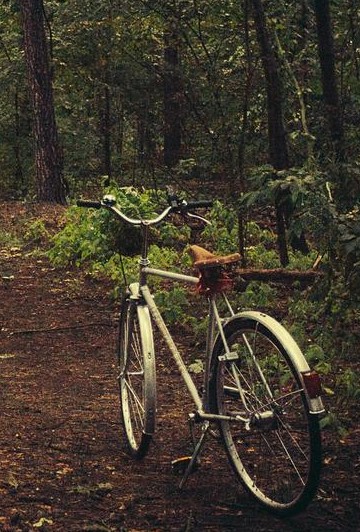
deviantart.com
One of the great pleasures of working in an interdisciplinary environment is being exposed to new ideas. Supervising a political science student project introduced me to Allen Habib’s article “Sharing the Earth: Sustainability and the Currency of Inter-Generational Environmental Justice.” Habib makes the case that the environment is a complicated system that cannot be divided up into parts. He uses the analogy of a bicycle. You can’t share a bicycle by giving one person the handlebars, a second person the frame and a third person the wheels. Dividing the bicycle up into parts renders it unable to be used for transportation. A bicycle is a system made up of its parts. It only functions as a system with all its parts.
 Resilience has become a particularly popular idea recently, applied to both individuals and a variety of systems, from enterprises to ecosystems. Resilient systems are able to quickly ‘bounce back’ after a disturbance, repairing or finding new ways to accomplish important functions. In biological systems, diversity and connectedness are important interconnected contributors to resilience. Healthy populations are genetically diverse, and for all but the smallest organisms, these populations will range over areas that are larger than the partitions we humans choose to place on the landscape. Where this is recognized, we can protect corridors that connect important habitats. Like the bicycle, these corridors need to be intact to serve their function. Removing one part of the corridor, with a residential development or tall fences around an agricultural property, pretty much eliminates the connectivity provided by the corridor. Removing 1% of the land in a corridor can remove 100% of its function.
Resilience has become a particularly popular idea recently, applied to both individuals and a variety of systems, from enterprises to ecosystems. Resilient systems are able to quickly ‘bounce back’ after a disturbance, repairing or finding new ways to accomplish important functions. In biological systems, diversity and connectedness are important interconnected contributors to resilience. Healthy populations are genetically diverse, and for all but the smallest organisms, these populations will range over areas that are larger than the partitions we humans choose to place on the landscape. Where this is recognized, we can protect corridors that connect important habitats. Like the bicycle, these corridors need to be intact to serve their function. Removing one part of the corridor, with a residential development or tall fences around an agricultural property, pretty much eliminates the connectivity provided by the corridor. Removing 1% of the land in a corridor can remove 100% of its function.
Like our non-human cousins, we humans also need for resources and mates. Prior to the development of permanent settlements, humanity was generally organized into small hunter-gatherer societies. There was normally no need for a notion of private property within these societies, as they are thought to have been largely cooperative. Contact between these societies may have been conflictual, particularly when population densities became large enough that resources were scarce. Technological innovations eventually enabled permanent settlement in communities large enough that kinship relations were no longer sufficient to sustain cooperation and sharing. The simplest social structures that could maintain order in these societies relied on force. Where monitoring and controlling the peasantry was difficult, social structures reliant on some level of mutual consent were sometimes more effective (The Decline and Rise of Democracy). As technological and social innovations continued to emerge, various theological and philosophical justifications for the organization of society were put forward. It was likely recognized may times over the millenia that people who are able to keep the results their effort put in more effort. Around the 17th century, with a growing agricultural population expanding into previously uninhabited areas, the idea that when a person invested in a parcel of land, that it would be right for them to ‘own’ that land became popular in some areas (see work of John Locke). Evidence of investment include cultivation and fencing to contain and manage livestock. Such enclosures produced a tension with the more nomadic ‘traveller’ societies that were and continue to be present. Within Europe there was not much remaining agriculturally productive land to be expanded into, and the ‘New World’ offered a place for people to acquire land for themselves. The US Homestead Act and the Dominions Land Act embodied the principle of ownership through investment. Where investment was a key justification for private property, enclosure and exclusion have also been important demonstrations of ownership, particularly in more modern times when speculating on land for potential future development or resource extraction has become common. Therefore, in many areas, we now have large tracts of privately owned land that remains largely in its natural state, without a common recognition that this land was used by people in that natural state prior to colonization. The rules around this private property generally grants to the property owner pretty much complete control over the use of the property, including exclusion of others from any use of the property. However, some of the value people get from the landscape comes from the ability to travel freely across that landscape, uses that are inconsistent with the way we have implemented private property in countries like Canada, the United States and Australia. Beaches and byways would be examples.

The iconic image of a beach includes a long stretch of sand meeting the water of a lake or ocean, with perhaps a rocky headland in the distance and maybe some footprints or somebody walking away along the sand near the water’s edge. This setting invites us to explore, to wander down the beach, feeling the wind and the waves, and searching for those little treasures, a shell, a pretty stone, etc. that the water may reveal. These images do not show docks, retaining walls, fences, etc. interrupting the ability of the viewer to wander the beach. By allowing the effective enclosure of the beach, such as has happened here in Kelowna, we have destroyed its function as a connected shared space. While technically private property only extends to the high water mark, there are very few places along the lakeshore near Kelowna where the view one has ‘invites’ one to wander down the beach.
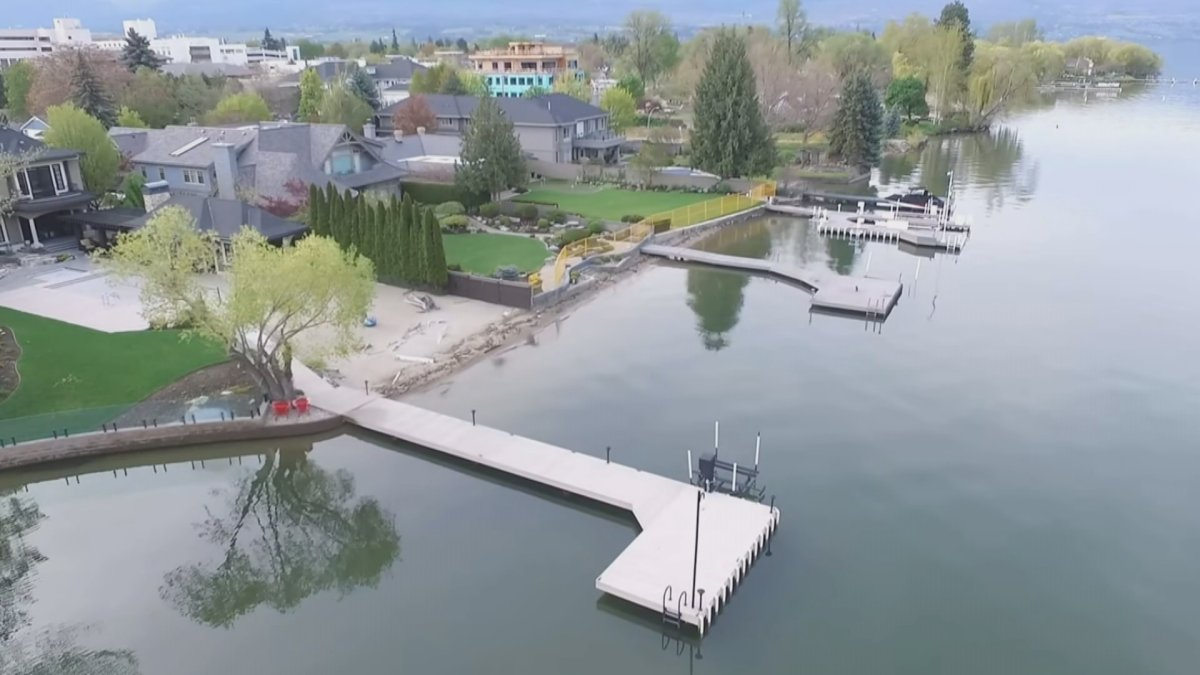
Global News photo
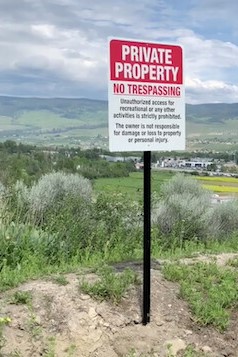
Castanet.net
Like beaches, our landscape of mixed grasslands and forests blanketing an undulating geography with multiple possible viewpoints invites wandering. However, much of the land at lower elevations is private property, fenced, with abundant ‘no trespassing’ signs. These signs are part of what is required for an owner to show possession of the land, and it is an offence under the Trespass Act in BC to enter lands so marked, or otherwise defined by a boundary or use (Trespass Act). This is an offense that can be prosecuted by the Crown, if it is brought to the attention of the Crown and the Crown chooses to pursue it. It can also be pursued by lawsuit undertaken by the owner of the land. In general, penalties for convictions are relatively light, unless damage has been done to the property, or there is blatant and willful disregard for the law. Therefore, if one chooses to jump a fence or walk past a no trespassing sign to hike across this beautiful landscape we occupy, one could be subject to a fine or some jail time. Exceptions exist if it is clear that the original Crown grant of the land as deeded land made allowance for passage on a road or trail, and/or if it can be demonstrated that such passage was a normal and accepted use on the land. These are very hard to prove, and generally the owner’s right to exclude people is upheld.
When one talks to land owners about why they insist on keeping people off of their land, concerns about liability for injury are usually the first thing raised. While the spectre of a lawsuit for a sprained toe bankrupting a small rural land owner is clearly frightening, this would be a very difficult case for the trespasser to win. In particular, under the Occupiers Liability Act, trespassers and recreational users who are not paying a fee for access are “deemed to have willingly assumed all risks” and the owner is only liable if an injury is the result of reckless disregard or intent to do harm (Occupiers Liability Act). The risk of losing an expensive lawsuit after an injury suffered by a trespasser therefore doesn’t seem to have much substance.
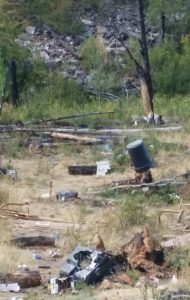
cbc.ca
The other issues land owners raise are damage to property and theft. Given the way some people treat crown land, this would seem to be a far more serious concern. If trespassers can be identified and the damage they have caused measured, then the owner is entitled to compensation, and further punitive damages may be awarded to discourage such trespass and damage to property. On large undeveloped rural properties, it would be very costly for owners to secure the borders of their property, detect and identify trespassers, detect and identify the damage that those specific trespassers caused, and then pursue a legal resolution. Consequently, many rural land owners simply accept that trespass will occur and damage will occur. At the same time, any effort to grant more rights of passage across – or even near – such properties are strongly resisted (e.g. Okanagan Rail Trail and Eldorado Ranch).
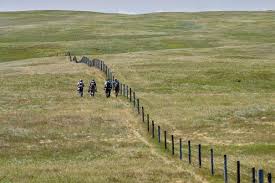
theconversation.com
If there is a public benefit from being able to pass over or recreate on undeveloped private lands but no real practical way to detect trespassers and establish a clear causal link between specific trespassers and the damage they do, do we have the laws right? In many northern European countries, people have rights to use private lands for passage and recreational purposes. Such passage has a very long history, and only relatively recently has been codified into laws. These rights also come with responsibilities that generally require that people using private land do not alter or damage the land (Wikipedia: Freedom to Roam). Establishment of such rights in the UK was at least partly the result of a ‘mass trespass’ to highlight the growing exclusion of the public from private lands that were formerly accessible (Wikipedia: Mass trespass of Kinder Scout). This right to roam continues to evolve, with legislated ‘codes of conduct’ establishing the responsibilities of those crossing or using private lands.
 Most of the countries that emerged from what were once British colonial territories have established much stronger private property rules that render almost all unauthorized entry onto private property a criminal offense. Is this difference a direct result of colonization and the objective of dispossessing the original human inhabitants of the land, many of whom were semi-nomadic? Did the indigenous cultures and legal systems that were followed prior to colonization by the British embody something similar to a right to roam and an understanding that such a right embodied a responsibility to not damage the land (see Why Canadians need the ‘right to roam’)? In British Columbia in particular, very few treaties were signed, and thus the issuance of Crown grants that created fee simple private property is of questionable legitimacy (Aboriginal Title and Private Property). To what extent can a private property owner in BC legitimately accuse another person of trespass when the Crown grant which established the private property may not be valid?
Most of the countries that emerged from what were once British colonial territories have established much stronger private property rules that render almost all unauthorized entry onto private property a criminal offense. Is this difference a direct result of colonization and the objective of dispossessing the original human inhabitants of the land, many of whom were semi-nomadic? Did the indigenous cultures and legal systems that were followed prior to colonization by the British embody something similar to a right to roam and an understanding that such a right embodied a responsibility to not damage the land (see Why Canadians need the ‘right to roam’)? In British Columbia in particular, very few treaties were signed, and thus the issuance of Crown grants that created fee simple private property is of questionable legitimacy (Aboriginal Title and Private Property). To what extent can a private property owner in BC legitimately accuse another person of trespass when the Crown grant which established the private property may not be valid?
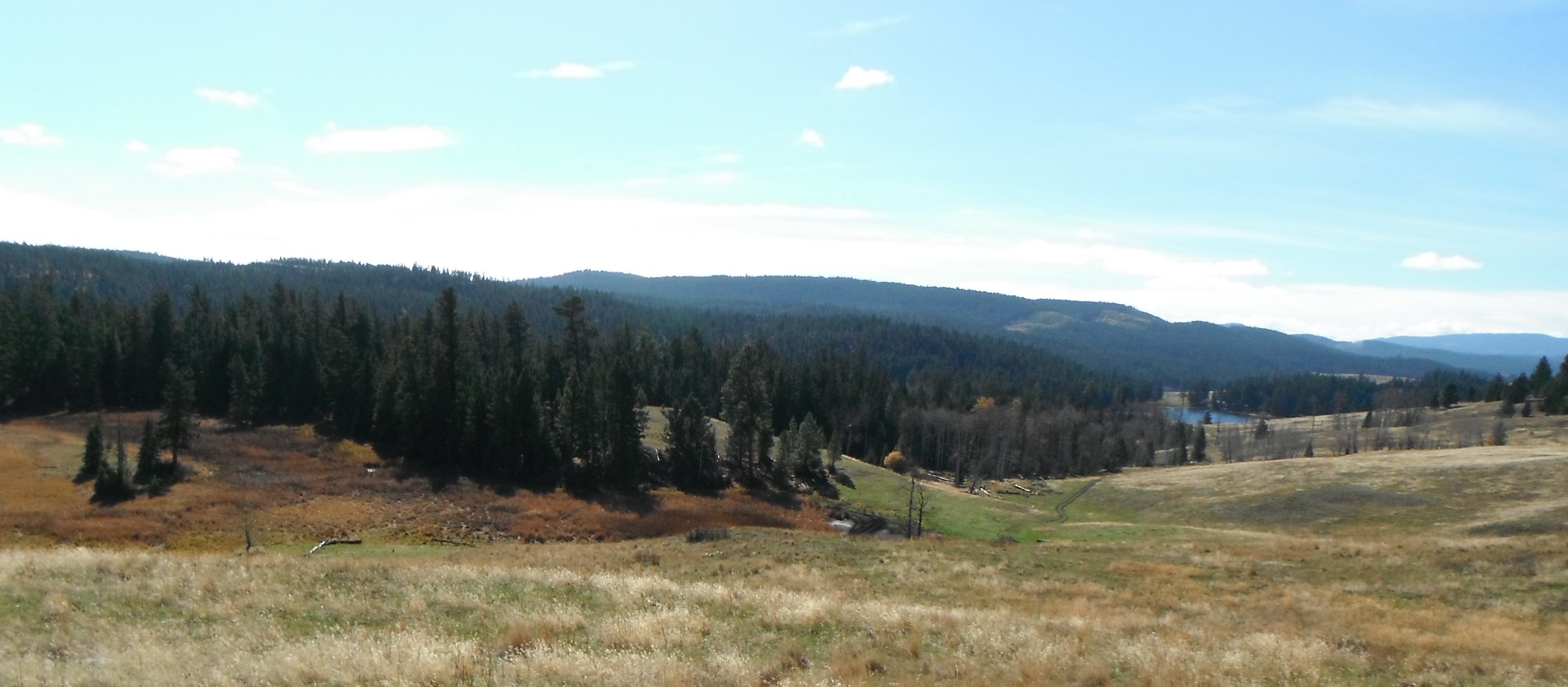
J. Janmaat
Can we move towards a system of property law that embodies a greater freedom of public access and use that respects the land, and respects the ability of the owner to make use of that land to support their livelihoods? The fundamental economic justification for private property is that owners will make the best use of the property they own if they are able to reap the benefits of their investments in their property. The economic justification for limits on private property are the existence of external costs borne by society at large from uses made by the private owners. Limiting access, where that access does not interfere with the ability to the owner to benefit from their investments is such an externality, and society is made worse off by providing private owners with such strong property rights. Finding a system that addresses the fact that some members of the public will damage private (and public) property which fairly addresses the costs to individual owners and society at large is in the public interest. I suggested in my last post (Licencing Recreation Use of Crown Lands) that we should be collecting fees from recreational users to help cover the cost of enforcement and of remediating damage. Perhaps this idea needs to be extended to private land as well, with some system to help with enforcement of conduct on private lands and repair of damage where the responsible party cannot be identified.

 Follow
Follow
John
Much appreciated. Good to add these thoughts to the discussion of use of open private land areas for public access for walking trails similar to Scotland.
Victor